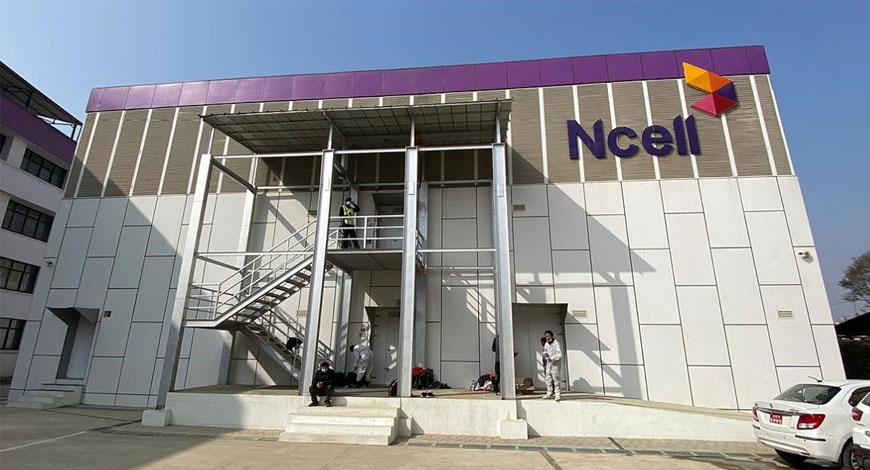KATHMANDU: Nepal’s largest private telecom company Ncell has built state-of-the-art data center in Nakkhu, Lalitpur in an investment of approximately Rs 2 billion. The first of its kind data center built by Ncell started operation the Covid-19 pandemic.
Ncell started construction of the sophisticated data centre in Nakkhu in 2015 to ensure uninterrupted service to its customers. As huge data were lost and services were frequently interrupted during 2015 earthquake due to various reasons including the power cut, Ncell came up with the plan to build its own data centre to overcome such challenges in the future.
Ncell claims that the recently completed data centre offers a Tier Three Plus-rated facility, which is first of its kind facility in entire South Asia.
Ncell has four data centre across the country located in Nakkhu, Pokhara, hetauda and Biratnagar. However, the one in Nakkhu is sophisticated with large capacity and investment, as per Ncell.
The newly-built data centre in Nakkhu has a diesel plant of 5MW capacity which ensures that the data centre keep running smoothly even during lengthy power outage. The new data centre has 250 racks and is constructed using 48 containers with a life of 25 years. The two-storey building has three halls, technical rooms, information processing centre, and an operation center.
As per Ncell, the data center has a design load of 2250 kW, and its AC rack runs on 220 voltage while its DC rack runs on 48 voltage. It has a system of One plus One, which means that one system can run the other when it breaks down. Additionally, the UPS backup is designed to last for 30 minutes in the event of a problem with the electricity authority’s grid.
Similarly, Ncell has installed Vesda technology in the data centre which detects fire automatically. Likewise, the Novak 1230 in the data centre helps in extinguishing the fire.
Ncell claimed that the new data centre provides a secure and reliable environment for servers, storage devices, networking equipment, and other critical computing infrastructure. It has backup power supplies, redundant data communications connections, environmental controls, and various security devices to protect against unauthorized access, data breaches, and other risks.

